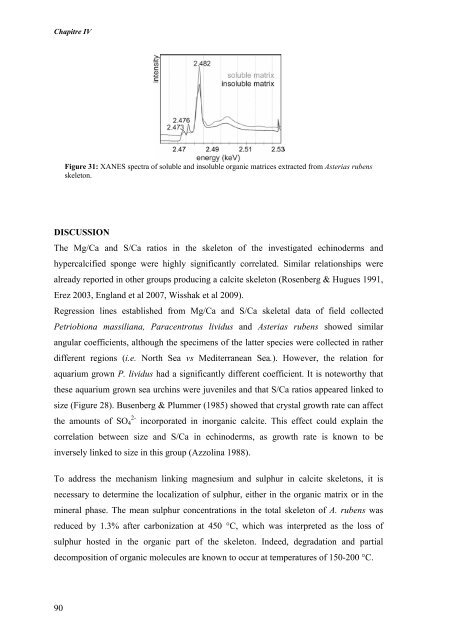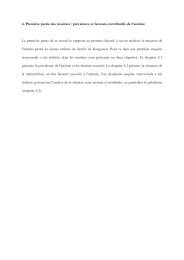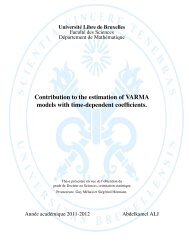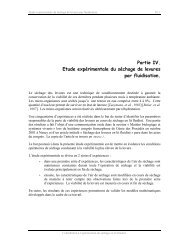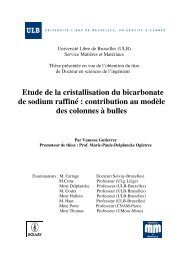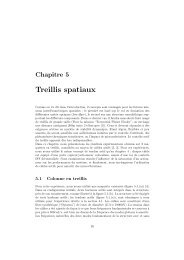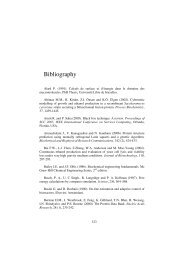Diapositive 1 - de l'Université libre de Bruxelles
Diapositive 1 - de l'Université libre de Bruxelles
Diapositive 1 - de l'Université libre de Bruxelles
You also want an ePaper? Increase the reach of your titles
YUMPU automatically turns print PDFs into web optimized ePapers that Google loves.
Chapitre IVFigure 31: XANES spectra of soluble and insoluble organic matrices extracted from Asterias rubensskeleton.DISCUSSIONThe Mg/Ca and S/Ca ratios in the skeleton of the investigated echino<strong>de</strong>rms andhypercalcified sponge were highly significantly correlated. Similar relationships werealready reported in other groups producing a calcite skeleton (Rosenberg & Hugues 1991,Erez 2003, England et al 2007, Wisshak et al 2009).Regression lines established from Mg/Ca and S/Ca skeletal data of field collectedPetriobiona massiliana, Paracentrotus lividus and Asterias rubens showed similarangular coefficients, although the specimens of the latter species were collected in ratherdifferent regions (i.e. North Sea vs Mediterranean Sea.). However, the relation foraquarium grown P. lividus had a significantly different coefficient. It is noteworthy thatthese aquarium grown sea urchins were juveniles and that S/Ca ratios appeared linked tosize (Figure 28). Busenberg & Plummer (1985) showed that crystal growth rate can affect2-the amounts of SO 4 incorporated in inorganic calcite. This effect could explain thecorrelation between size and S/Ca in echino<strong>de</strong>rms, as growth rate is known to beinversely linked to size in this group (Azzolina 1988).To address the mechanism linking magnesium and sulphur in calcite skeletons, it isnecessary to <strong>de</strong>termine the localization of sulphur, either in the organic matrix or in themineral phase. The mean sulphur concentrations in the total skeleton of A. rubens wasreduced by 1.3% after carbonization at 450 °C, which was interpreted as the loss ofsulphur hosted in the organic part of the skeleton. In<strong>de</strong>ed, <strong>de</strong>gradation and partial<strong>de</strong>composition of organic molecules are known to occur at temperatures of 150-200 °C.90


